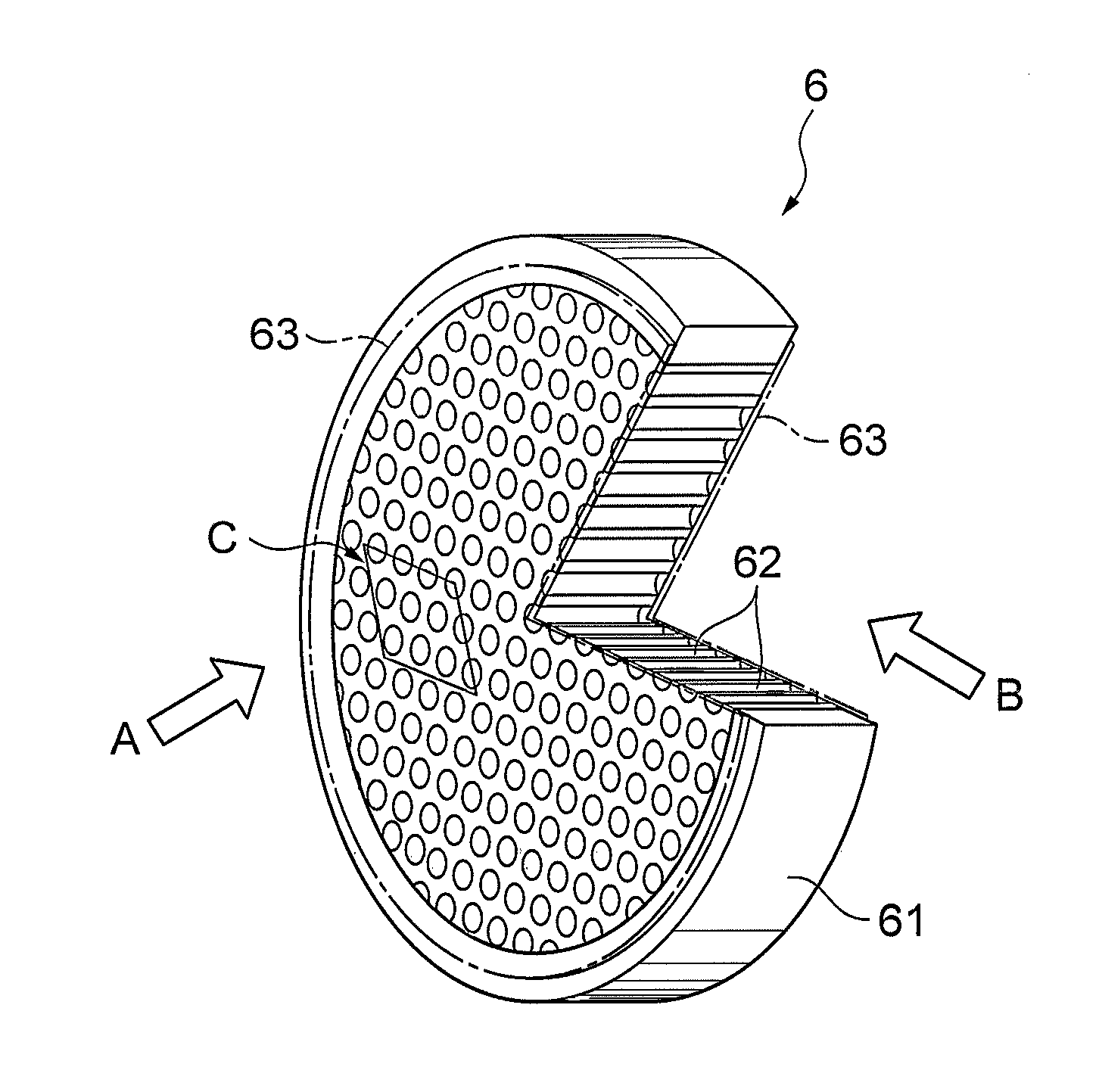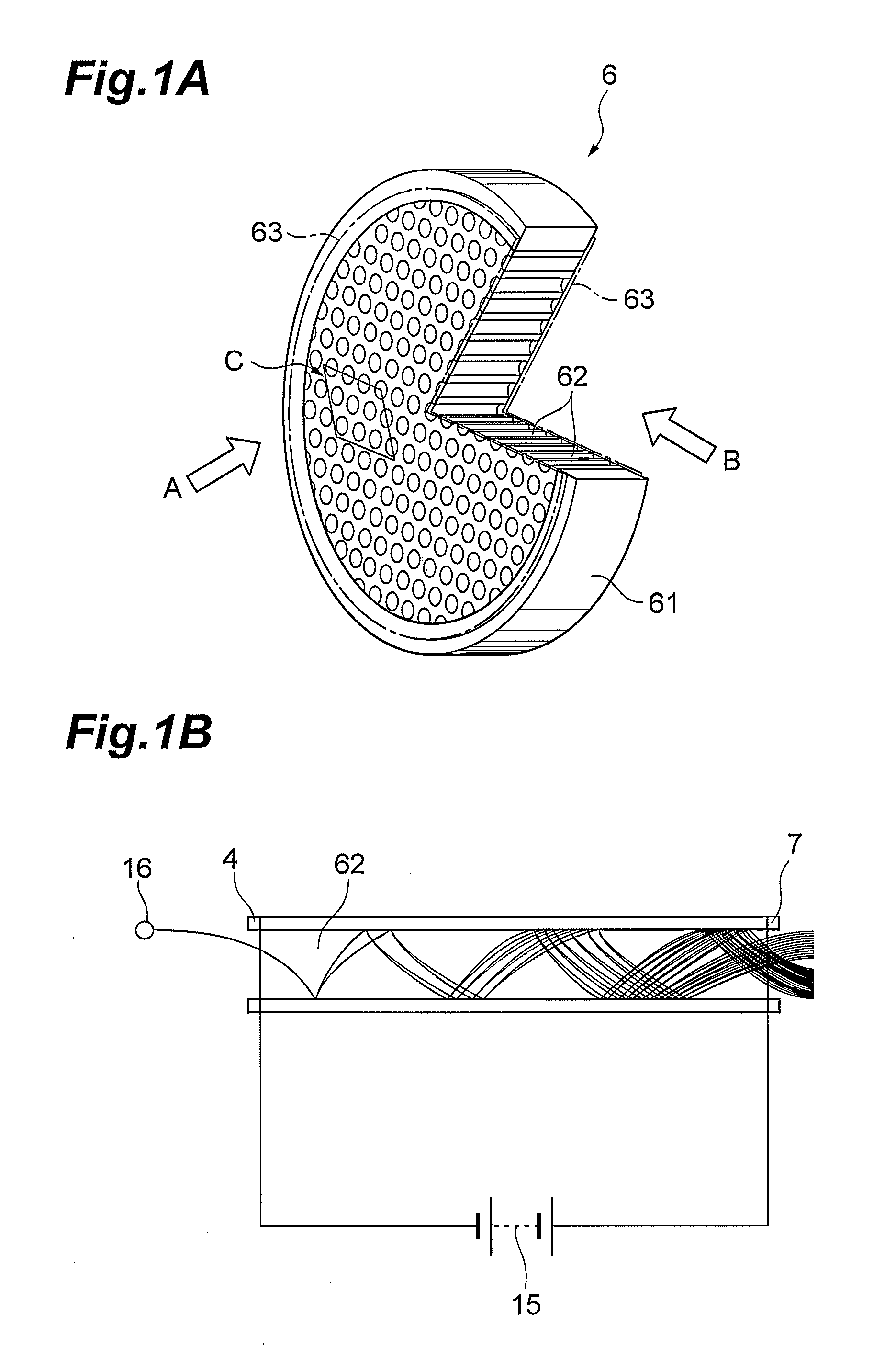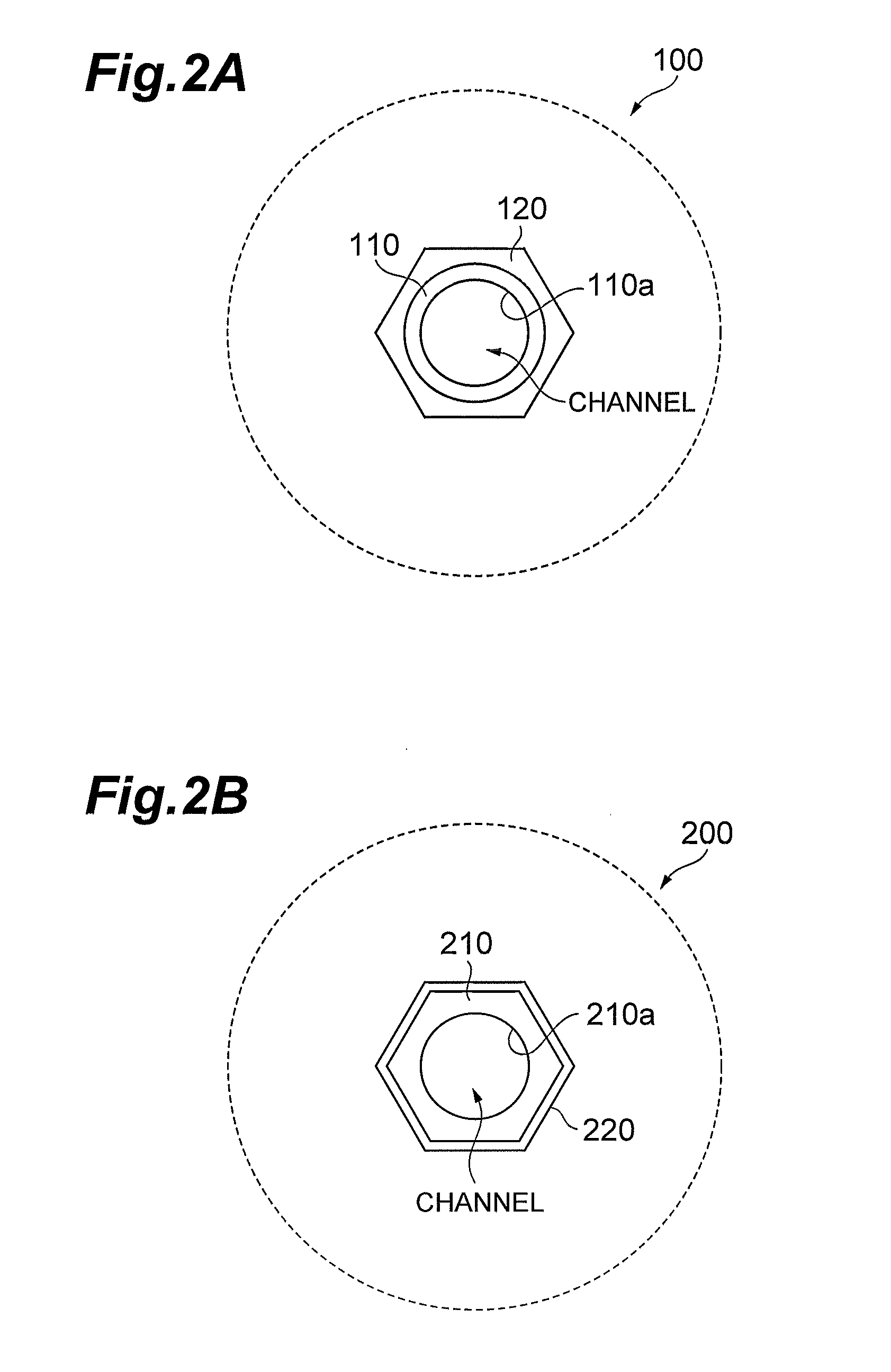Microchannel plate
a microchannel plate and microchannel technology, applied in the field of microchannel plates, can solve the problems of mcp acid resistance degradation, failure of stable mcp production, and mcp manufacture itself, so as to improve the temperature characteristic of mcp electric resistance, improve the acid resistance of mcp, and increase the content of lead
- Summary
- Abstract
- Description
- Claims
- Application Information
AI Technical Summary
Benefits of technology
Problems solved by technology
Method used
Image
Examples
Embodiment Construction
[0041]Each of embodiments of the microchannel plate (MCP) according to the present invention will be described below in detail with reference to the accompanying drawings. In the description of the drawings, the same portions or the same elements will be denoted by the same reference signs, without redundant description.
[0042]FIGS. 2A and 2B are drawings for explaining structures near a channel in MCPs according to the present embodiment. FIGS. 3A and 3B are drawings showing planar structures of the MCPs according to the present embodiment, which correspond to the part of the MCP (region indicated by arrow C) as viewed from the direction indicated by arrow A in FIG. 1A.
[0043]The MCPs according to the present embodiment are electron multipliers having the main body comprised of lead glass which exhibits electric insulation before a reduction treatment and exhibits electric conduction after the reduction treatment, and their basic structure resembles the structure of the MCP 6 shown i...
PUM
 Login to View More
Login to View More Abstract
Description
Claims
Application Information
 Login to View More
Login to View More - R&D
- Intellectual Property
- Life Sciences
- Materials
- Tech Scout
- Unparalleled Data Quality
- Higher Quality Content
- 60% Fewer Hallucinations
Browse by: Latest US Patents, China's latest patents, Technical Efficacy Thesaurus, Application Domain, Technology Topic, Popular Technical Reports.
© 2025 PatSnap. All rights reserved.Legal|Privacy policy|Modern Slavery Act Transparency Statement|Sitemap|About US| Contact US: help@patsnap.com



